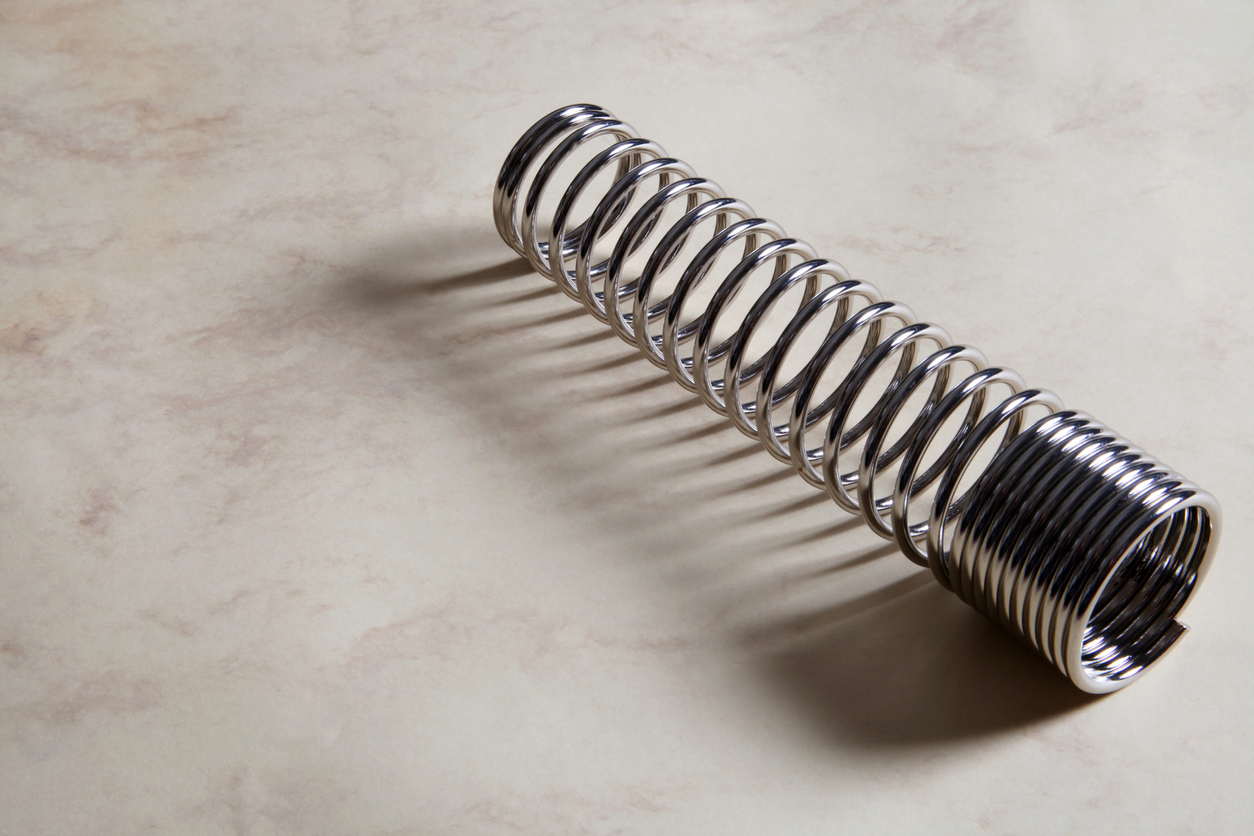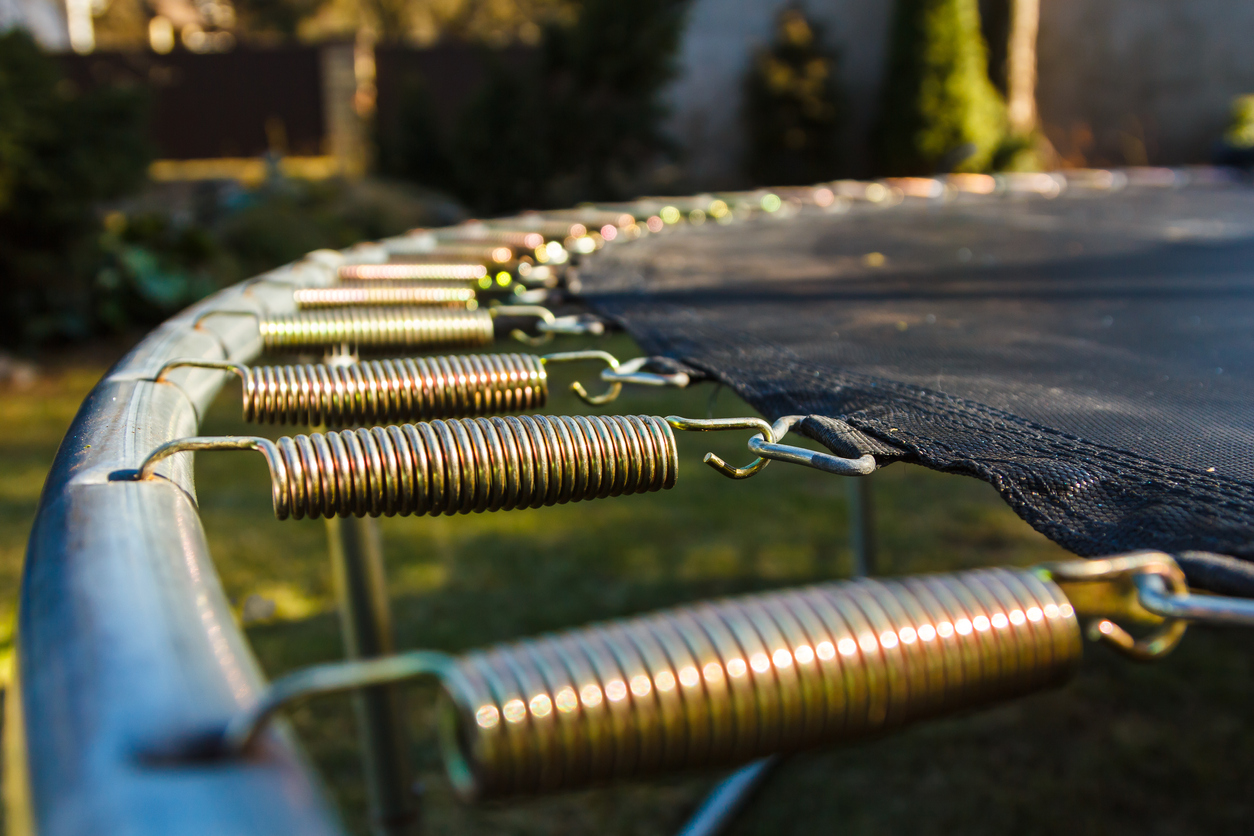Here at Airedale Springs, we are passionate about the range of springs that we stock. You will most likely be familiar with compression springs, tension springs and torsion springs, since these are some of the most popular types of springs.
However, they are all extremely different and have different uses and applications. So, in this article, we’re taking a look at these springs in further detail and will discuss the uses they are most known for.

Compression Springs
These types of springs differ from others in their design, as they’re open-coil helical springs that provide resistance to a compressive force applied axially. Compression springs are the most popular types of springs and can be formed into many shapes, such as cylindrical, conical, barrel and hourglass. They absorb potential energy as they expand and the more pressure put on the spring, the more energy it has to push back until returning to its initial height.
As compression spring manufacturers, we’re aware that every single spring we create is going to be used in a variety of products in many different industries.
From mattresses to mobile phones, compression springs are incredibly useful for everyday objects. They’re also commonly known for being the springs in pogo sticks. On a pogo stick, when the spring is at full compression, the person using it gets lifted by the recoil. The pogo stick was invented in 1891 by George H Herrington and it became extremely popular as a toy and exercise equipment in the 1970s.
You can also find compression springs in valves, ballpoint pens, door locks, railways, turbines, wheelchairs, engines and electronics. Compression springs are often used in aircraft too, as they’re key components of engine controls, wheels, brakes, engines and guidance systems.

Firearms are another application for this type of spring, since compression springs absorb the energy created by firing the gun. Any time you have to push a button, you’re also putting pressure on a compression spring.
In essence, these springs are incredibly versatile and can easily be manufactured in different sizes and diameters, depending on their end use.
Tension Springs
Extension or tension springs are another type of spring used in everyday objects. They are tightly wound, so they’re loaded with tension, and their ends have either hooks or loops to use as attachment. The trampoline is one of the most famous examples of tension springs.
When you jump, the springs are pulled apart and force is applied. As a consequence of this, the spring tries to return to its original length, creating the inertia to send you into the air. The first modern trampoline is believed to have been made in 1936 by Geroge Nissen and Larry Griswold, and it’s still hugely popular today.

In addition to trampolines, tension springs are used on push and pull levers, rocking horses and screen doors. Robotics also make use of these types of springs, as do washing machines, surgical lights in operating theatres and farm machinery.
Prison springs, or drawbar springs, are a different form of extension spring. They have three parts with two ‘U’-shaped wire forms being inserted into the middle of the spring; if the two ends are pulled apart, the spring is compressed. There is a limit to the compression, which makes these springs great for safety netting between landings in prisons, for instance.
We’re tension spring manufacturers, so we can create a wide range of springs for your specific requirements.
Torsion Springs
Torsion springs work by torsion or twisting. They’re suitable when there’s a requirement for angular movement with the legs of the spring attached to other components. As torsion spring manufacturers, we ensure that the design of the springs is optimised to maintain maximum rotational pressure between two surfaces.
Common uses for these types of springs include hinges and lever returns, as well as counter-balancing weight application for garage doors. In addition, they are well-known for being used in mousetraps, with the first spring loaded mousetrap being invented by William C Hooker of Abingdon. The trap had a spring-loaded bar and a trip to release it. Although the mousetrap has evolved considerably since then, it’s always been seen as a crucial invention.
Other popular uses for these types of spring include clothespins, clipboards, digital cameras, ramps, clocks and watches.

As with other springs, torsion spring manufacturing takes into account several factors in order to produce a quality product. Size and shape are vital, as are spring rate, maximum deflection (or how far the spring can be pushed before it become damaged), pitch and ends.
Common Materials in Spring Manufacturing
All of these springs can be made from a range of spring materials, including high carbon steels, stainless steels, alloy steels, non-ferrous alloys and high temperature alloys. The material chosen will depend on the end use of the spring itself – for example, copper springs are great for electric applications, while stainless steel is often found in the food and medical sectors.
High-carbon steel is, perhaps, the most commonly used in spring manufacturing; hard-drawn wires for low-stress applications are more cost-effective than higher tensile materials that are ideal for high-stress applications.
High-carbon steels owe their name to the carbon content in their composition. They possess around 0.60% to 1.25% carbon, which means they’re strong, hard and resistant to wear and tear – perfect for springs with their repetitive movements. This material is also the hardest and toughest of all carbon steel, but it can break more easily too.
Stainless steel is hugely popular for springs. This alloy is resistant to heat and corrosion and can be slightly magnetic due to the cold-drawing manufacturing process of the spring wire. There are several grades of stainless steel, as well as several families: austenitic, ferritic, duplex martensitic and precipitation-hardening stainless steels.
Each has its own properties and features, from austenitic stainless steels being easy to weld, to duplex stainless steels having a great degree of resistance to corrosion. This alloy is easy to clean and maintain, as it is very hygienic, which is another reason why it’s so used in commercial kitchens and hospitals.
Other materials include chrome vanadium and chrome silicon, which are cold-draw steel suitable for shock loads. Non-ferrous alloys, like those made from aluminium, copper and nickel, can perform well in applications that require lightweight materials and resistance to heat.
Airedale Springs have been spring manufacturers since 1945, so we have many years of experience to offer our clients. As a specialist in many different types of springs, we certainly appreciate the multiple applications that they have and how critical they are for everyday life.
Our clients recognise our passion for spring manufacturing and seek us for our commitment to high-quality products, so get in touch with our expert team today on 01535 643 456 or send us a message to sales@airedalesprings.co.uk to learn more about how we can help.

